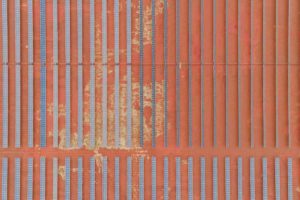There are certain characteristics of misinformation that remain very consistent. One of the key ones is how rapid the responses tend to be.
Very literally during the April 28 major blackout in Spain, Bloomberg’s Javier Blas published a post on X that set the tone of coverage of this event for weeks to come, blaming ‘not enough inertia’ (ie, not enough generation coal, gas and nuclear’s rotating masses that can help stabilise the grid’s frequency).

It is tough to understate how widespread this assumption became: Spain’s blackout was either a shameful lesson in why we need to back to coal and gas, rely more on nuclear power, or just a lesson in failed integration of wind and solar.
The “Breakthrough Institute”, a think-tank with a long-held hostility towards environmentalists and renewable energy, published a piece entitled “It’s Okay to Notice When Solar and Wind Fail”.
Its authors, Seaver Wang and Alex Trembath, declared that Spain’s blackout was indicative of “a failure to ensure enough spinning generator capacity to maintain stabilizing grid inertia despite widespread understandings of these risks”.
Bloomberg’s Blas loudly heralded it the “first blackout of the green era”. Norwegian nuclear advocates did not hesitate to lay the blame specifically and solely on ‘insufficient inertia’.
Well, it’s a month and a half later, and the first official report has been released. As was covered here at Renew Economy, the initial press conference from the government details how voltage issues were not adequately dealt with by a fleet of thermal power stations – coal, gas and nuclear – that were being paid to do exactly that.
“The Spanish government has stated that conventional power plants were a key contributor to the incident due to failure to provide voltage control services, along with possible grid management issues”, said Sarah Brown, from Ember.
Since then, the full 182 page report has been released. It is in Spanish, understandably, but unfortunately. But a machine-translated version can be found here, and you can get the core message from good chunks of this report.
It goes even further in outlining how the initial theories blaming a lack of inertia were seriously, profoundly incorrect.

The report makes something incredibly clear: Spain’s system had more than enough ‘inertia’ at the time of the blackout. According to the report, the system operator reported that the system had inertia levels of 2.3s, “higher than the 2s value recommended by ENTSO-E in its INERTIA project“.
This is a catastrophic debunking of the widely-shared theory that Spain was operating at critically low levels of synchronous generation at the time of blackout, most of which were based on simply glancing at the generation mix and seeing a large amount of solar.
It also highlights a second and extremely vital point: the frequency excursions occurred relatively late in the sequence of events, meaning most of the damage had been done by the voltage issues early on.
They conclude that “It is highly probable that, in a scenario of greater inertia and therefore a slowing down of the frequency drop, the “surge wave” would have caused the “cascade effect” in any case, causing a significant part of the generation to drop”.
And, perhaps most damningly, the full report details that 4 nuclear power stations, 1 coal-fired power stations and 6 gas-fired power stations were all online, coupled to the grid, and being paid for their obligation to regulate the voltage setpoint.
Despite their failure to provide this service obviously being a key factor among the mix of reasons for this blackout, the report was still weirdly framed as vindication by those who have been arguing that the problem was ‘not enough traditional power stations’. It is tough to imagine a report that says the exact opposite more completely.
There is a very clear reason that ‘inertia’ as a system strength issue becomes such a forced focus in the wake of a big blackout like this one. While readers of Renew Economy know well that it’s a characteristic that can be replicated by technologies like wind, solar and batteries, it is still not common knowledge.
That means it is a handy, fancy-sounding cudgel with which to attack renewables in the wake of system collapse. As I said in early May:
It is not surprising that the thousands of people who rushed to blame Spain’s blackout on renewables – and specifically a lack of ‘inertia’ – have turned out to be about as wrong as they could possibly have been.
But it is also interesting to see the dynamics of blame play out – particularly in how the flurry of media coverage explicitly or implicitly blaming renewables and inertia have been replaced with neutral-sounding coverage of grid planning and management issues.


There will be another blackout in the future – probably a big one, and given the growing ubiquity of wind and solar on large power grids, probably in a region with lots of renewables. So be aware: inertia is the new baseload, and everyone who gets it wrong won’t be rushing to issue corrections when the full report comes out.








